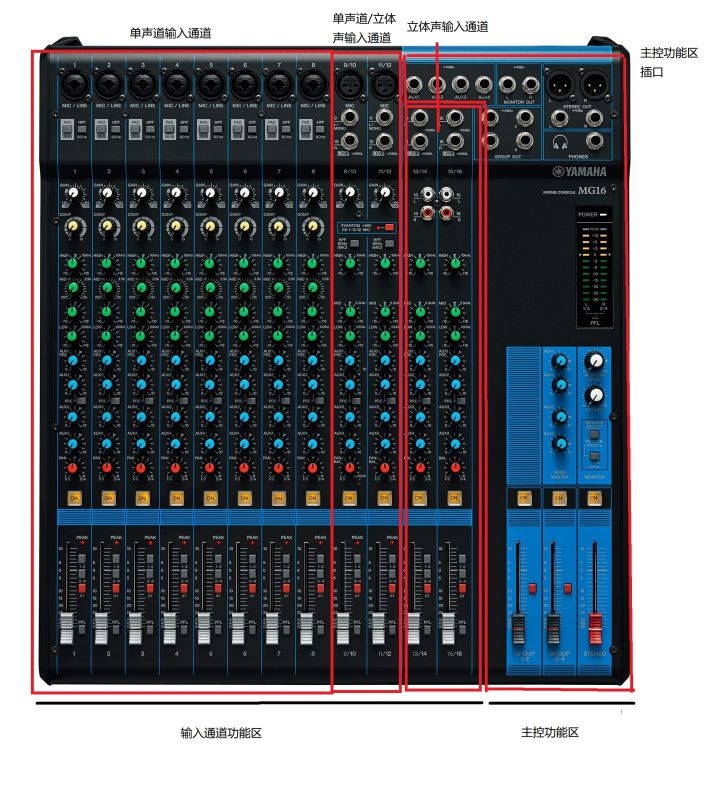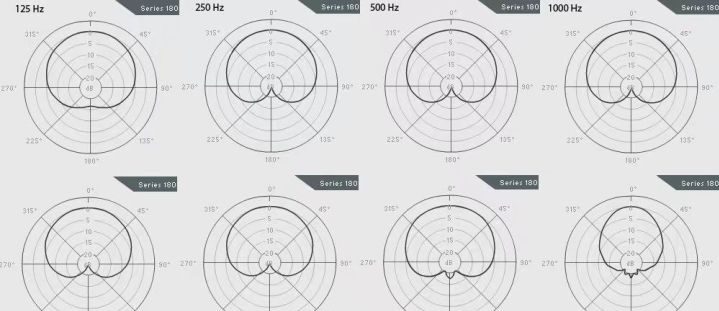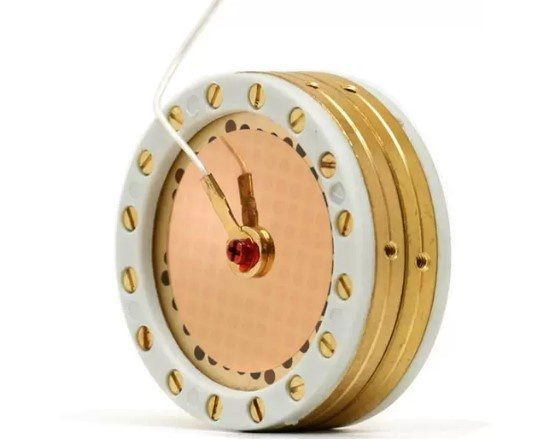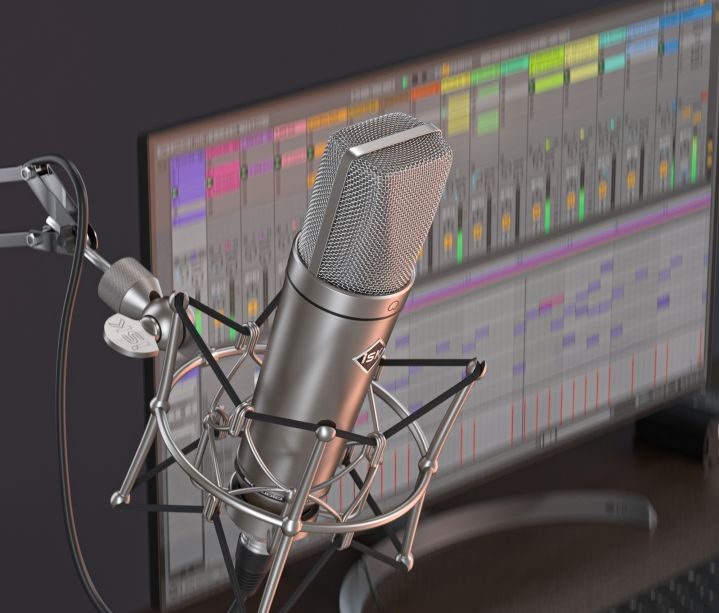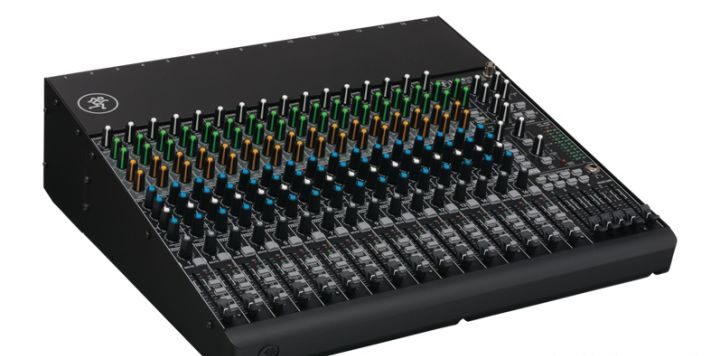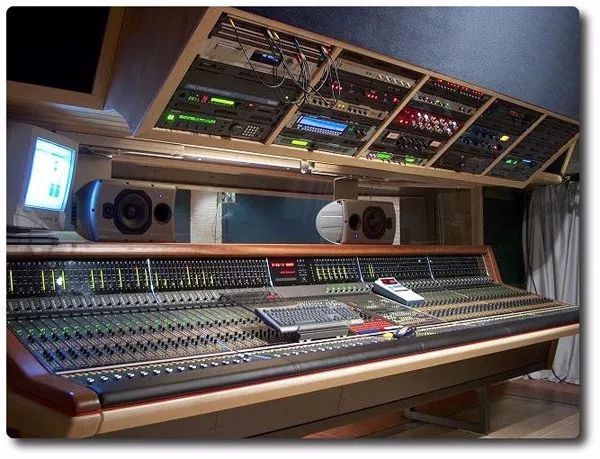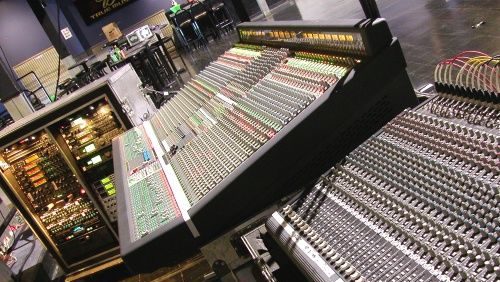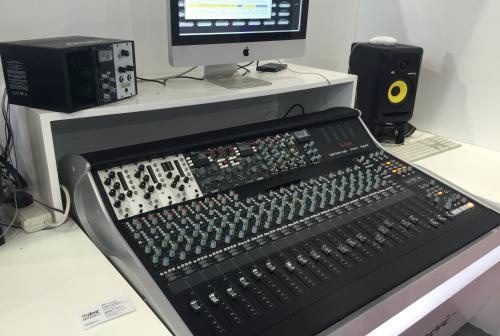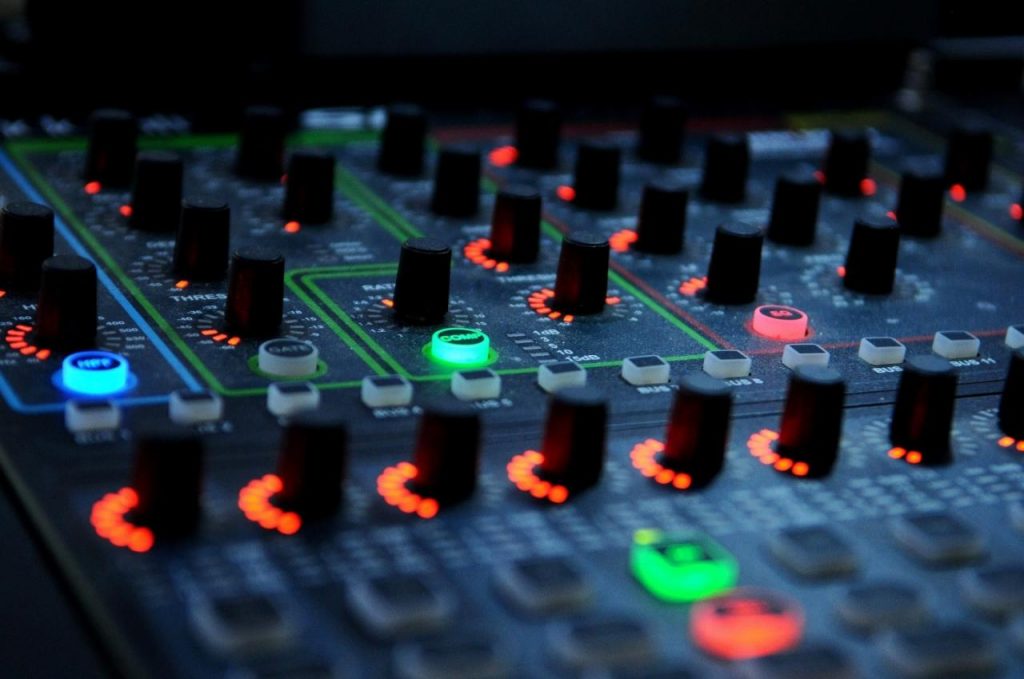1 Product Introduction
AG06 is a 6-channel analog mixer equipped with a USB sound card. Its appearance is as follows:
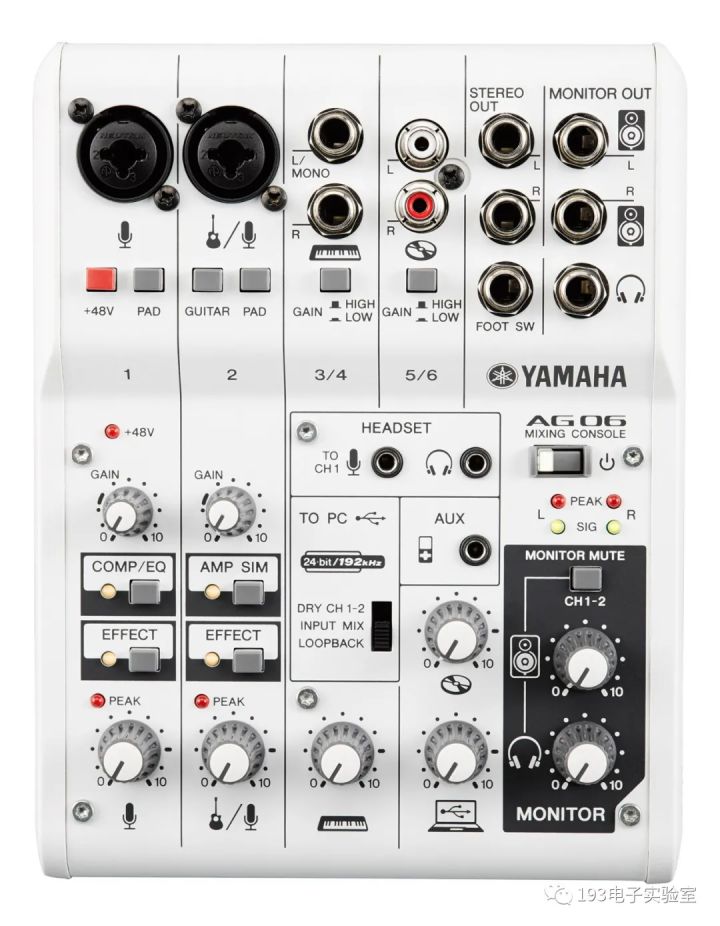
First introduce the input interface:
Channels 1 and 2 are both 1/4” TRS and XLR combo connectors. However, channel 1 has phantom power, which is suitable for microphones; channel 2 has a high-impedance option, which is suitable for guitars.
Channels 3/4 are the 1/4” TRS ports of the left and right channels, respectively. They support mono (MONO) and can be connected to keyboard instruments. Channel 5/6 is an RCA interface, commonly known as a lotus head, which can be connected to a CD player.
In addition to these 6 channels, there are also three hidden input interfaces: one is the HEADSET microphone interface (3.5mm, TS), which is sent to channel 1, and is used with the microphone of channel 1. HEADSET microphone priority high. The second is the AUX (Auxiliary) auxiliary interface (3.5mm, TRS), which is independent of the other 6 channels, and can even be called 7/8 channels, but it has no gain (GAIN) and volume (LEVEL) adjustment, so it is called auxiliary interface. The third is the USB audio input interface, which is at the top of the product.
Then introduce the output interface:
Most of the output interfaces are in the upper right corner of the product, including the main stereo (STEREO) output, the monitor (MONITOR) output, and the headphone (PHONE) output, all of which are 1/4” TRS three-core connectors. In addition, the headphone jack of the HEADSET part is also an output, and the HEADSET output has a higher priority than the PHONE, and they are also optional.
The wiring diagram of AG06 input and output interface is as follows: [quoted from AG series product manual]
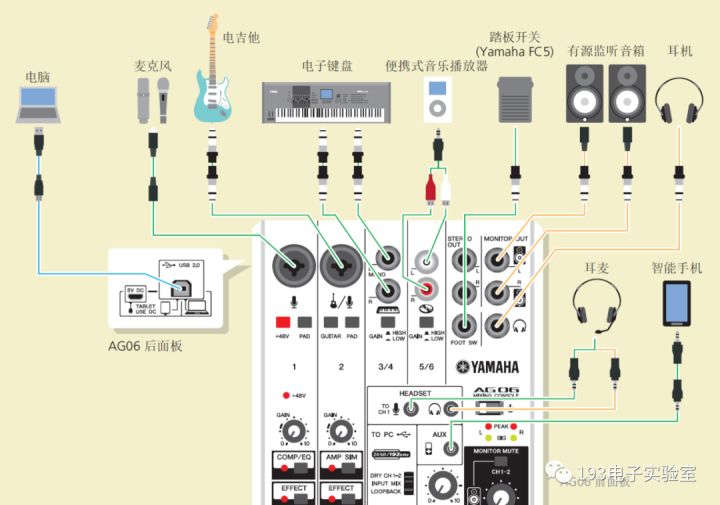

About the control part:
In terms of input control, channels 1 and 2 both have 0~10dB pre-gain knobs and -26dB fixed attenuation (PAD, Passive Attenuation Device) buttons. Channels 3/4 and 5/6 each have an H/L fixed pre-gain. Channels 1, 2, 3/4, 5/6 each have a volume adjustment knob, and the USB audio input has an additional knob.
On the output control, the monitor output and the headphone/headphone output each have a volume adjustment knob. The MUTE button here also mutes only channels 1 and 2, and is valid for monitor output and headphone/headphone output. In addition, AG06 also has compressor (COMP)/equalizer (EQ), speaker simulator (AMP SIM), and effect device (EFFECT) control, which are all realized by DSP, which is convenient to control. AG06 also has audio mode selection sent to USB, with CH1-2 dry signal, mixing, and loopback (LOOPBACK) mode. The LOOPBACK function is to superimpose the USB audio played by the computer/mobile phone with the mixing of the mixer, and then send it back through the USB, which is suitable for recording and webcasting.
The sound signal flow of the whole machine is as follows: [quoted from the AG06 instruction manual]
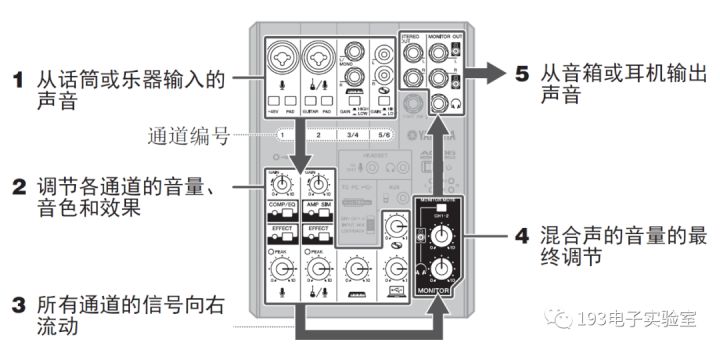
In general, AG06 has rich interfaces and powerful functions. It only uses USB power supply, which is easy to operate. The USB sound card supports 2×2 channels, enabling 24-bit/192kHz high-resolution recording. It can meet users’ various needs for music performance, Internet radio/podcast, game live broadcast, music appreciation and mixing production.
2 Disassembly diagram
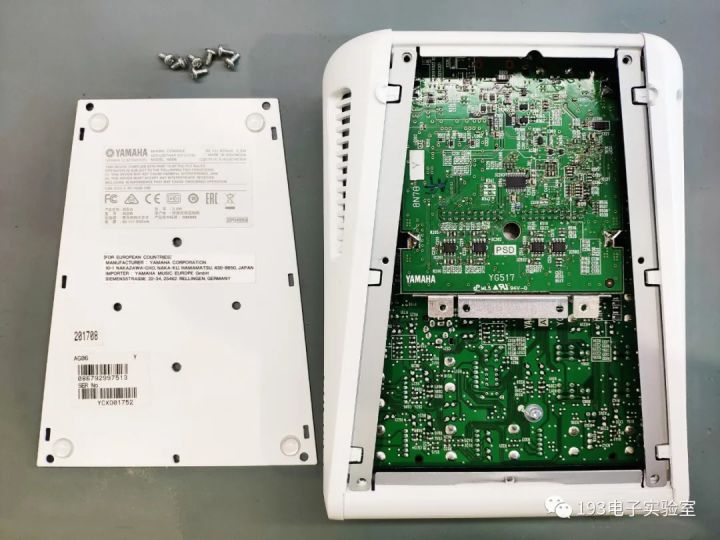
▲Unscrew the bottom screw, directly remove the cover, a flat metal plate. AG06 adopts the split design of two circuit boards. The main reason is that most of the interfaces and knobs are plug-ins, and it is difficult for the chip to have a position.
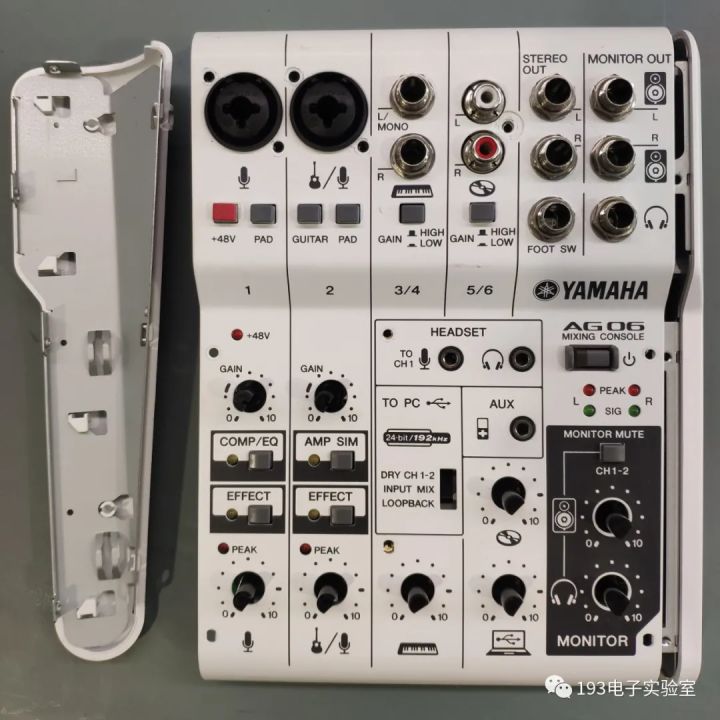
▲After unscrewing the screws on both sides of the top, it is easy to remove the side panel. It is worth mentioning that the outside of the side panel is plastic, and the inside is still supported by metal, and the all-metal body is stronger.
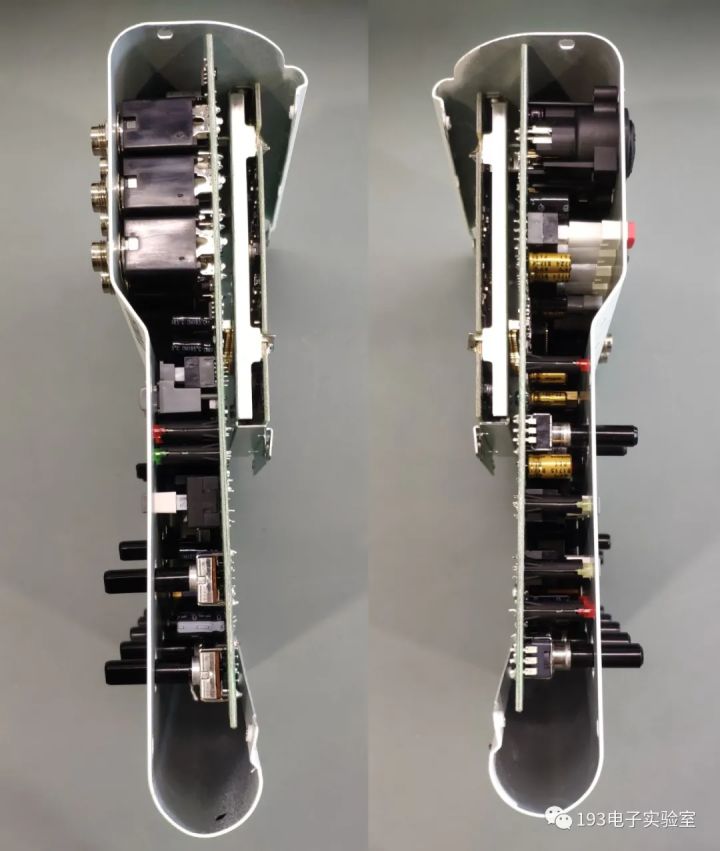
▲Side view. It can be seen that the front panel is still a wrapped design, and the upper and lower sides are very rounded.
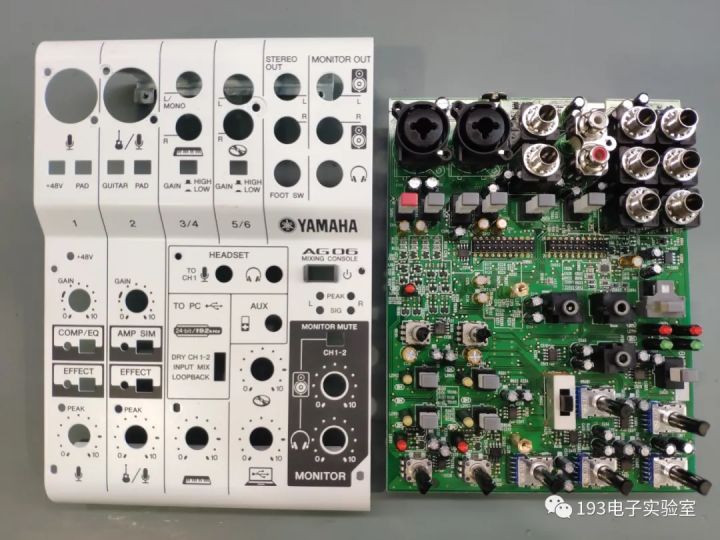
▲ After removing all the screws on the top surface, remove the circuit board.
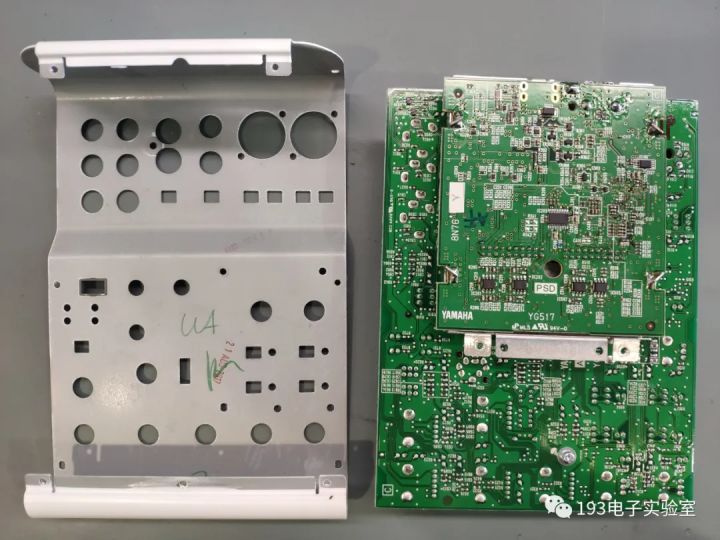
▲ Turn around and take a look.

▲The control board and the motherboard are connected by pin headers. The difference is that the socket is on the front of the motherboard. This design is a bit clever. However, the motherboard is still double-sided, and there is no process saving.
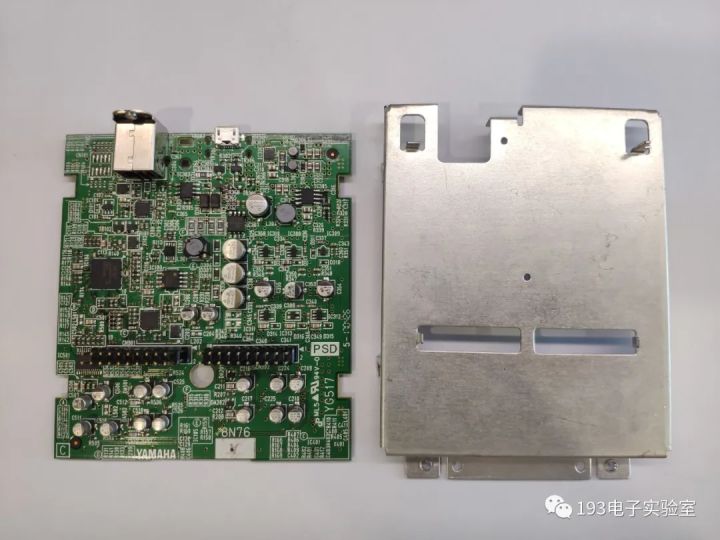
▲After welding 5 solder joints, the shielding cover of the control board was removed. It stands to reason that the EMI of this metal body mixer should not be a problem, but Yamaha still uses a shielding cover very rigorously, which also acts as a support by the way.

▲ Disassemble the family portrait. Repairability out of 10.
3 Analysis summary
AG06 signal flow block diagram:

The above picture is also taken from the official website, and it is a bit blurry after uploading. There are detailed user manuals and data specifications on Yamaha’s official website. If you understand them, you will master this product.
The location diagram of the control board chip is as follows:

The hardware block diagram of the control board is as follows:
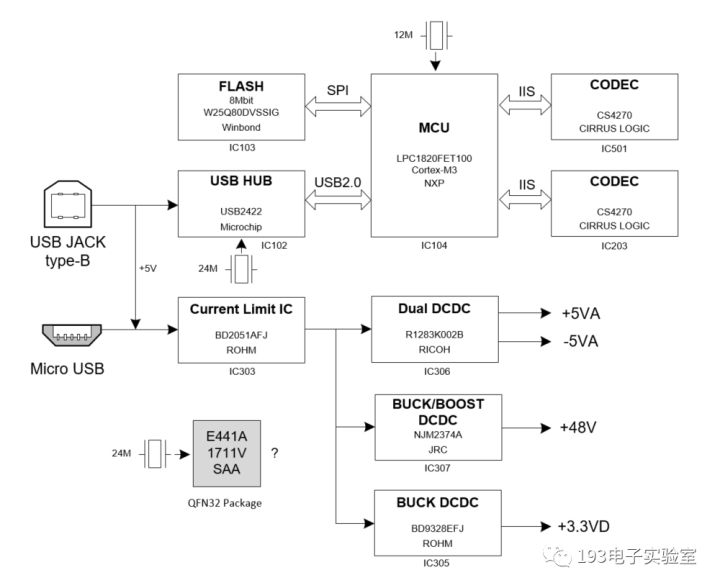
The system uses Cortex-M3 core MCU, external 8Mbit FLASH, and USB interface. There is an overcurrent protection chip on the power supply, which is then converted to the required voltage through DCDC. The CODEC uses the same CS4270 as the Soundcraft Notepad. In addition, the product uses a chip with silk screen printing as E441A, which may be customized by Yamaha.
Yamaha AG06, price 268USD, same as Soundcraft Notepad-8FX. In terms of function, the two have their own advantages: AG06 uses digital EQ, which can only be controlled by computer software; 8FX is knob control. AG06 uses USB 5V power supply, mobile power supply can supply power, easy to use, but the maximum output is only 10dBu; 8FX uses adapter power supply, the maximum output is 22dBu. AG06 has more functions, especially the loopback function is suitable for recording and live broadcast, but its interface layout is a bit messy, not as clear as 8FX.
Both AG06 and Notepad-8FX have USB ports, which can be used as sound cards. They are also durable, compact and portable, making them a good choice for entry-level analog mixers.
